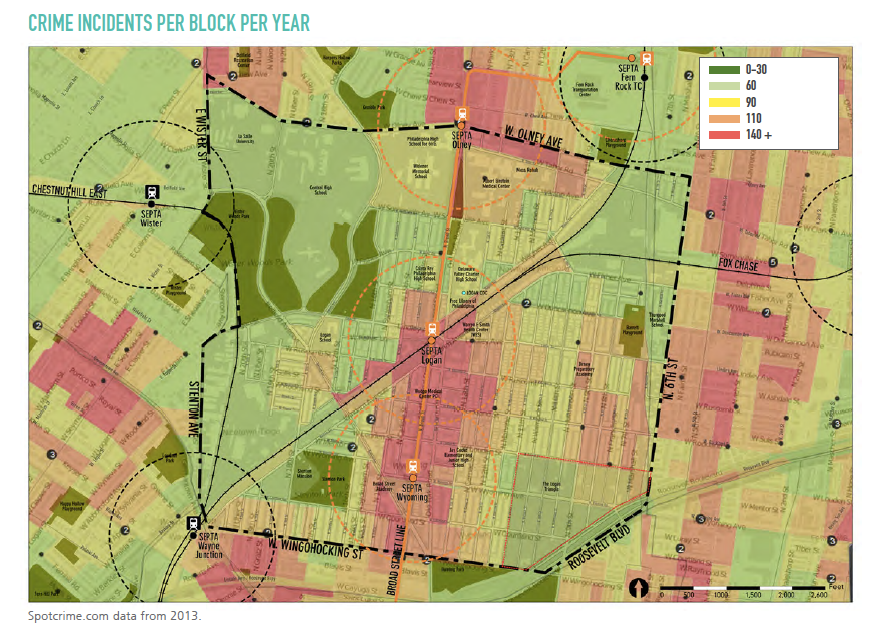Planning Commission approves neighborhood plan for Logan

The Philadelphia City Planning Commission (PCPC) voted unanimously last week to formally accept a comprehensive neighborhood plan for Logan in North Philadelphia.
The neighborhood plan is the culmination of a nearly three-year effort from the late Logan Community Development Corporation (Logan CDC) and the Philadelphia Redevelopment Authority (PRA), working with the design firm WRT. The PRA adopted the orphaned neighborhood plan, which was supported by a Wells Fargo Regional Foundation planning grant, after the Logan CDC abruptly dissolved in 2014 due to financial trouble.

To the consternation of many residents, Logan is probably best known for its eponymous Triangle, 40 acres of fallow land where nearly 1,000 houses once stood. Those rowhouses were built on top of unstable fill, a base of ash and cinder used to bury a creek. Houses sank, and the city began to evict residents and bulldoze the dangerous dwellings following a gas line explosion in 1986; it didn’t finish until 2003. For the past 13 years, Logan Triangle has been an overgrown eyesore of unkempt fields crisscrossed by poorly maintained pavement, which has attracted short dumpers and depressed property values in the surrounding neighborhood.
Last fall, the PRA selected the Goldenberg Group to redevelop Logan Triangle, and in the winter, the company announced a proposal for the first phase of the Triangle’s renaissance: a $25 million youth basketball and education facility. The neighborhood plan itself spends most of its time away from the Triangle, focusing instead on the challenges facing the remainder of the neighborhood and strategies to overcome them.
The three neighborhood aspects rated the worst by residents were access to employment, variety of goods and services available, and safety.
The Broad Street Line offers excellent transit connectivity, but a plurality of Logan residents still drive alone to work. Most residents with jobs — 18 percent are unemployed, almost double the city average — work outside the neighborhood, and most people who work in Logan live elsewhere: only a tiny fraction of people both live and work in Logan.
Logan’s double-edged sword is its commercial corridor along Broad Street. Businesses along the commercial corridor have struggled, often leading to vacant storefronts. Crime in the neighborhood concentrates along Broad Street, making it that much harder for commercial growth and creating a hard negative cycle to break.
But Logan has assets to build from: The neighborhood is home to a handful of anchor institutions like La Salle University and Einstein Medical Center, offering the potential for local employment to residents. While commercial vacancies are high, at 23 percent, a concentration of historic buildings offers plenty of architecturally vibrant space for creative reuse.
Instead of relying on one large development at Logan Triangle to kickstart an entire neighborhood revitalization, the plan focuses instead on a series of smaller interventions: more block captains to rebuild neighborhood pride and keep streets clean; better lighting in the parks; and improved streetscaping and buses to spruce up the Broad Street commercial corridor. The call for a series of smaller scale improvements—implementable by registered community organizations, church groups, or other neighborhood nonprofits—also reflects the loss of Logan CDC to implement a more sweeping strategy. The plan calls for the recently formed Logan Civic Association to fill its void and, eventually, led the effort to reconstitute the CDC.

WHYY is your source for fact-based, in-depth journalism and information. As a nonprofit organization, we rely on financial support from readers like you. Please give today.





